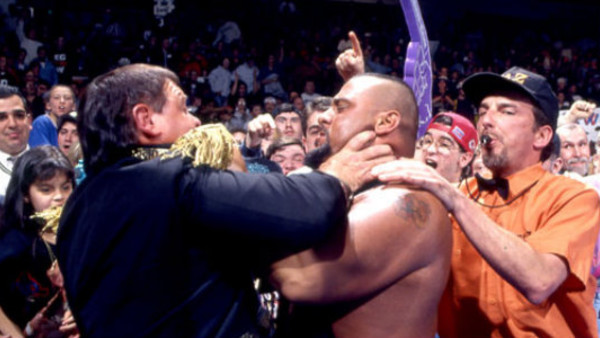
Co-Operation in Wrestling – WWF & ECW
As Jeff Jarrett once said, you can make a lot of acquaintances in professional wrestling, but very few friends. The foundations of the business is built on egos and alpha personalities, and there are many shady incidents that occur behind-the-scenes. However, there have been times when wrestling companies have mutually agreed to work together, and on occasion, it can be beneficial to all parties. At time of writing, WWE and TNA have done some talent exchanges. How long will this last? Hard to say, but we can look back at past events and see situations when promoters saw the positives in banding together, even if just for a little while…
WWF & ECW
We’re kicking off part one of this new series with a rather unique relationship, one that I’m not sure has been fully explained by either party. When ECW founder Tod Gordon was asked in 2001 why he thought Vince McMahon agreed to work with Paul Heyman, Gordon wasn’t entirely sure. He did say though, that possibly it was due to McMahon respecting Heyman’s hustle as a promoter, that Heyman may have reminded Vince of himself in the early days.
The connection goes back long before ECW opened for business in 1992. A young Heyman in his early teens had the moxie to call the offices of Capitol Wrestling – then the parent company of the World Wrestling Federation – and convince them he was a journalist. So impressed was Vince Sr when he got there, that despite his young age and clearly not a journalist, he was given permission to take photos.
Renowned wrestling magazine editor and journalist Bill Apter commented that they tried on several occasions – unsuccessfully – to get Heyman barred from ringside. This was due to Apter, or another photographer lining up a good shot, only for Heyman to elbow them aside and take the snap himself!
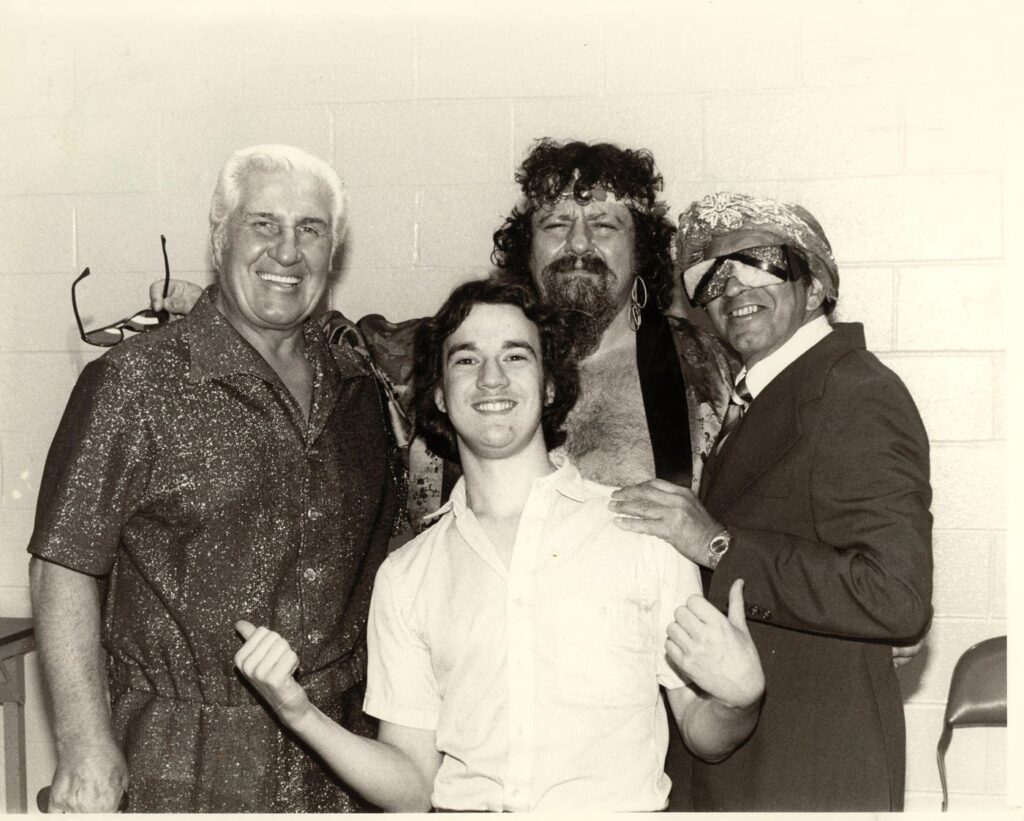
Heyman would go on to enter the business as a manager in his early 20’s working a variety of territories, including Continental in Memphis, the AWA, and Jim Crockett Promotions. He played the role of a cocky, yuppie New Yorker who’s signature gimmick was a cell phone (which back then was the size and weight of a house brick). Adopting the name Paul E. Dangerously, he quickly developed his promo and character, and if not for Jim Cornette, would have won many more PWI Manager of the Year awards.
When JCP was purchased by Ted Turner, Heyman shifted over to World Championship Wrestling. He would become the manager of The Dangerous Alliance, which instantly became the top heel group in the company. But after clashes with then-booker Bill Watts, Heyman’s contract was terminated in 1992. He initially worked with Jim Crockett Jr, who had returned to the business with a promotion in Texas called the World Wrestling Network. At the same time, he was brought into Philadelphia by his friend Eddie Gilbert, who was then booking for Eastern Championship Wrestling.
WWN didn’t last, and Heyman spent more and more time coming to Philly from New York. When Gilbert walked out, Paul took over the book. Heyman had many ideas of what wrestling should be, and set about changing the landscape. With a crew of willing wrestlers and the backing of owner Tod Gordon, Eastern began to make waves.
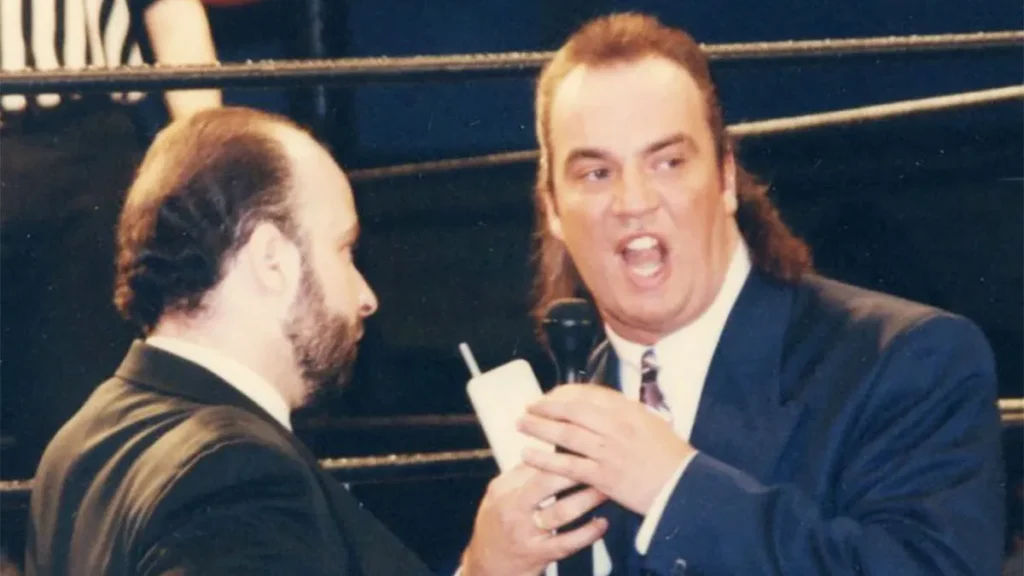
The WWF began to take notice of ECW during their King of the Ring 1995 pay-per-view. Taking place in Philadelphia, a contingent of fans chanted “ECW” loudly during the KOTR final between Mabel and Savio Vega. They then expressed their anger and disgust when Mabel beat Savio to become King of the Ring.
Co-operation between the WWF and ECW kicked off when the WWF returned to the city for Mind Games on September 22, 1996. Mankind – who had not too long ago worked for ECW as Cactus Jack – cut a heel promo before the show in the hope the ECW fans in attendance wouldn’t cheer him. Heyman and ECW stars Tommy Dreamer and The Sandman sat in the front row. The Sandman got involved when he sprayed a mouthful of beer at Savio during his match with Bradshaw.
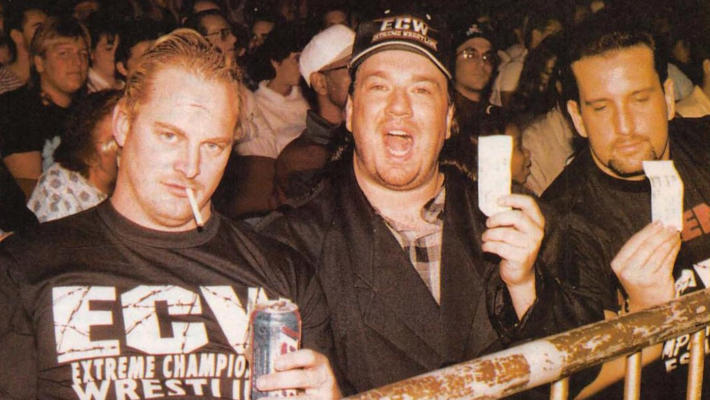
On commentary, Vince McMahon acknowledged ECW as a “local wrestling promotion,” and the following night on RAW, Taz jumped the security rail and held up a “Sabu Fears Taz” sign. Nobody was informed that this was going to happen, and Taz was told backstage if anybody got in his way, get them out of the way. A hapless photographer tried to help Taz by telling him it “wasn’t worth it,” only to be shoved aside and breaking his shoulder when he hit the steel steps.
In February of 1997, RAW colour commentator Jerry Lawler issued a challenge to ECW to turn up to the Manhattan Centre. The following week on February 24, a ring attendant was taken out by The Eliminators (Saturn and Kronus) and Heyman screamed into the microphone that the challenge had been accepted. McMahon agreed to not only allow ECW wrestlers to compete on RAW, but to also plug their first pay-per-view (Barely Legal) coming up in April.
During the episode, three matches involving ECW wrestlers took place. Lawler rolled his eyes and denounced the action, and Heyman talked up ECW and the wrestlers. McMahon adopted a neutral stance, clearly not an expert of the product, despite giving them the air time. After the matches – which took up the entire first half of RAW – Heyman threw down his headset and tried to get at Lawler.
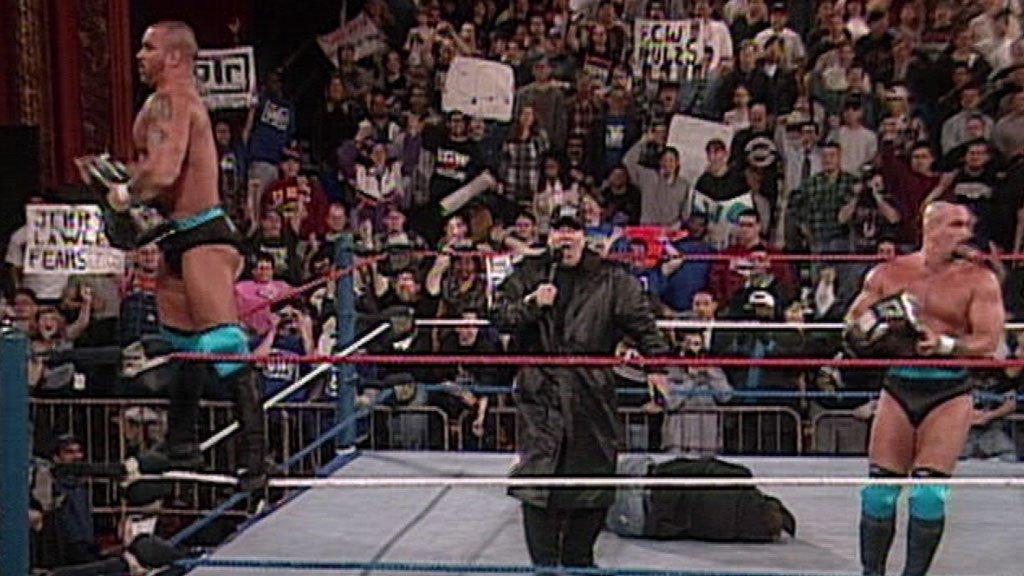
On a subsequent episode of RAW, a segment was hosted by Lawler, where Heyman – surrounded by ECW wrestlers – plugged Barely Legal. “The King” was incredulous – both for real and in character – about just why McMahon was allowing another wrestling promotion precious air time to plug a “stinkin’ pay-per-view.”
The “ECW invasion” was brief, as Heyman reached an impasse over his top star Rob Van Dam being told to lose a match to Jesse James. Far from being Road Dogg and the peak of his popularity with DX, James was then a lower card wrestler, at best. Even though the finish was to be a count-out, Heyman wouldn’t budge and the ECW crew walked out. It would cost RVD a job in the WWF, as Jim Ross related in an interview with 411mania that he was keen to sign Van Dam at the time.
While it gave ECW more exposure, Tod Gordon had not been as big on the idea as Heyman. His argument was that after all the years of ECW telling their fans that the WWF – and WCW – were crap, now they were going to do an angle with them (the WWF). To him, he felt like it was selling out.
ECW went ahead and did their pay-per-view, and then followed it up a month later with Wrestlepalooza. Tommy Dreamer finally got a pinfall victory over his nemesis Raven, whom he had been feuding with for the best part of two-and-a-half years. As Raven slinked off to WCW, a series of events occurred that saw the lights go out, and Dreamer be ambushed by Sabu, then Rob Van Dam. When it went off a third time, the ECW Arena fans were infuriated by the sight of none other than Jerry “The King” Lawler in “their house.” Along with his anti-ECW remarks on WWF television, Lawler was a symbol of everything ECW fans thought was wrong with the wrestling business. The beat down of Dreamer and others – along with Lawler’s caustic comments on the microphone – caused a near riot.
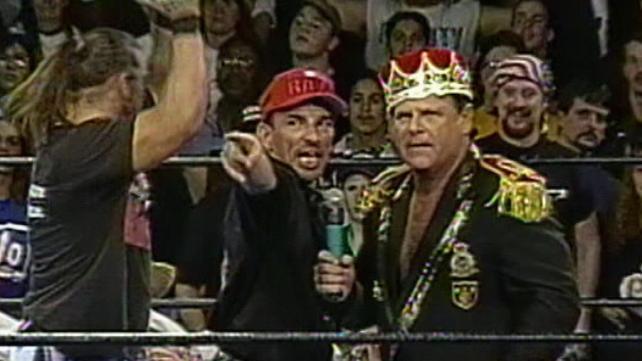
Due to the aforementioned walk-out, the feud was transitioned to being more about ECW versus Lawler’s Memphis promotion, the USWA. This is a story for another time, as it is rich in detail. However, many of Lawler’s promos were done with a WWF logo in the background. “The King” taunted ECW for being small-time wrestlers who – besides RVD and Sabu – wouldn’t make it in the mighty World Wrestling Federation. The rivalry ended when Dreamer beat Lawler at their second pay-per-view, Hardcore Heaven.
Even while ECW stars were no longer appearing on RAW, the WWF sent some of their talent to ECW. They were not necessarily the Federation’s top draws, but rather wrestlers that needed more seasoning. In this sense, McMahon used ECW like a developmental territory, giving recent signings of rookies like Droz and Brakkus the chance to work in front of crowds and gain experience.
But there were times when other names were sent to ECW that were of more value. Doug Furnas and Phil Lafon were a tag team from All Japan that were signed by the WWF. Their style didn’t mesh well with that audience, but they got a better response when they worked in ECW. Another was Taka Michinoku, who had appeared in a six-man at Barely Legal, and then signed to be the top star of the new WWF Lightheavyweight division. While also struggling to get over as a serious competitor, ECW fans were delighted to see him come into ECW to work with Super Crazy and Papi Chulo (Essa Rios in the WWF).
The WWF also sent Al Snow, who had undergone a few uninspiring gimmicks, and was probably set to be released. But in a career saving period, he developed the insane “Head” gimmick, finding a mannequin’s head stashed in the back rooms of the ECW Arena, which doubled as a storage space for the annual Mummer’s parade. With Heyman grasping the concept with both hands and producing Snow’s segments and match entrances, Al got the call up and fit in well with the WWF’s new “Attitude” era.
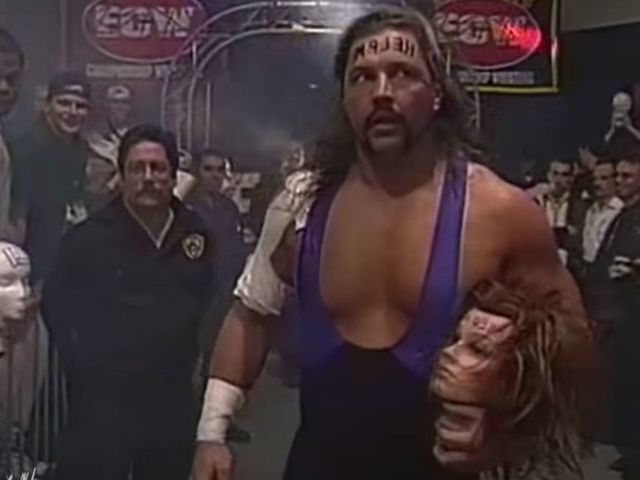
McMahon would do something more unprecedented, in that he loaned Heyman money to keep ECW afloat. The company routinely went through financial difficulty, and the handing over of a reported $500,000 no doubt helped Heyman immensely. McMahon is also believed to have sent regular small checks to ECW, which as McMahon explained was because he “felt bad for taking their talent.” Even before ECW reached pay-per-view, their roster was routinely raided, particularly by WCW. The WWF struggled initially in the Monday Night War, and it behooved Vince to ally with ECW.
In the middle of 1999, ECW took a massive step when they inked a deal with The Nashville Network (TNN). This provided them with a national outlet, which would help greatly to get more eyes on the product, and advance storylines for their pay-per-views. It didn’t take long for the deal to sour though, as despite the show on Friday nights garnering the highest ratings on the network, TNN were still not pleased with the lack of production values. Seemingly, they thought they would get a product that looked just like RAW or Nitro. In fairness, as Joey Styles has admitted, ECW simply wasn’t ready to make that step. Matters weren’t helped when right after the show debuted, the WWF signed top acts Taz and The Dudley Boys.
They would also lose Mike Awesome in April of 2000. The current ECW World Heavyweight champion, Awesome became disillusioned with Heyman for bounced checks (something that would become a sadly recurring theme for everyone). He jumped to WCW, showing up on Nitro, where the commentators acknowledged that he was the ECW champion. This set in motion a series of bizarre events, whereby Heyman filed an injunction, and Awesome – now a WCW wrestler – was to return to ECW to drop the belt on April 13, 2000 in Indianapolis, Indiana.
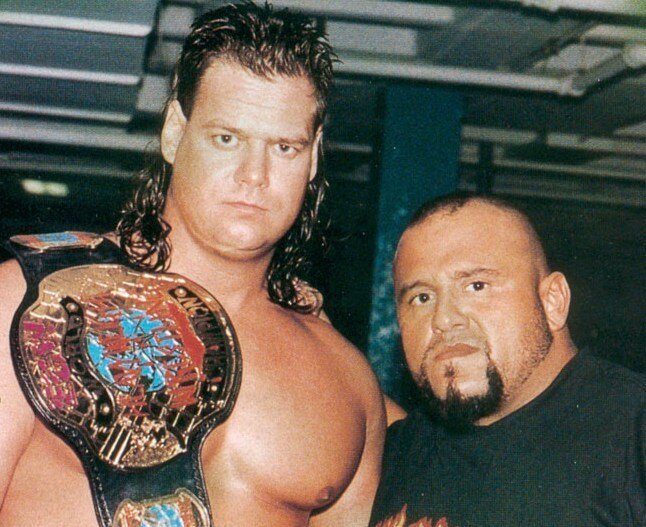
If that wasn’t strange enough, Heyman managed to get the WWF to release Taz for extreme duty, and in a short match, Taz submitted Awesome for the title. He would wrestle WWF champion Triple H as the ECW champion in the WWF, but lost due to misguided interference from Dreamer. This set up a bout at ECW’s Cyberslam 2000, where Taz dropped the belt to Dreamer.
By this point, Monday Night RAW was as hot as it had ever been, and their contract with long-time partner USA Network was up for renewal. Instead, McMahon signed a big money deal to shift RAW to TNN. It’s believed that McMahon tried to prevent ECW being kicked off the network straight away, but instead, TNN parted ways with ECW in October 2000 to make way for the WWF’s arrival. TNN’s signing of the WWF made a strong argument to those in ECW who felt they were just used as guinea pigs to see how wrestling would fly on their network. According to Heyman, an attempt was made to get on the USA Network with McMahon providing a ‘character reference,’ but they were unsuccessful.
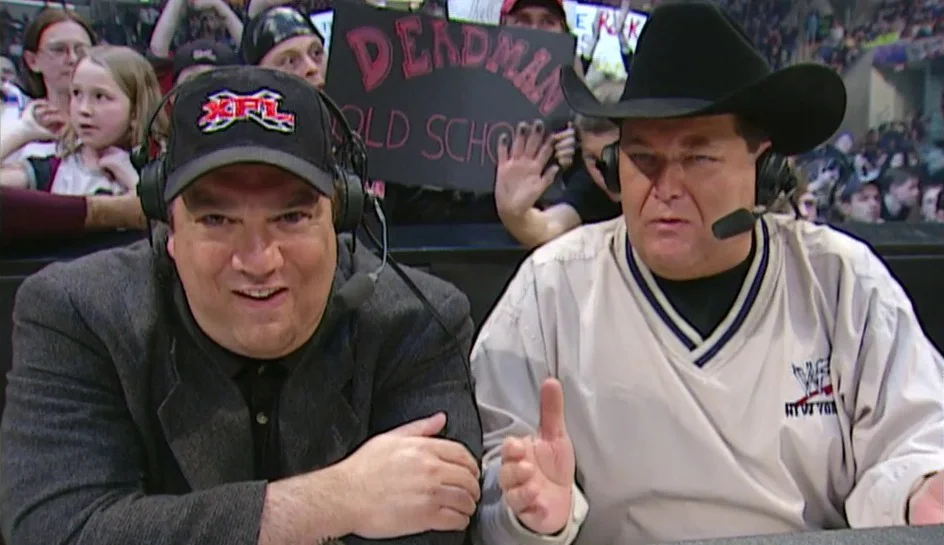
ECW limped along for a few months, with wrestlers and fans alike believing that somehow, a way would be found to keep it afloat. Heyman headed to California, on the premise of trying to ink a new TV deal. But as it would turn out, he went to film scenes for the film “Rollerball” instead (which released in 2002). The message got through that things were really finished when Heyman – in an ironic twist – was brought in as the replacement for Jerry Lawler on the RAW announce desk. Heyman declared bankruptcy and closed ECW officially on April 4, 2001.
McMahon would go on to acquire the ECW trademarks, as well as its tape library. He resurrected ECW after a successful “one-off” pay-per-view, a time commonly called the ‘WWECW’ era. Prior to that, after also purchasing WCW in 2001 and the subsequent invasion falling flat, Vince brought back ECW to bolster WCW. To this day, Heyman is still employed, aggressively staking his claim as the greatest manager of all time as a part of the “Bloodline” storyline. But, all of that can wait for another day…
